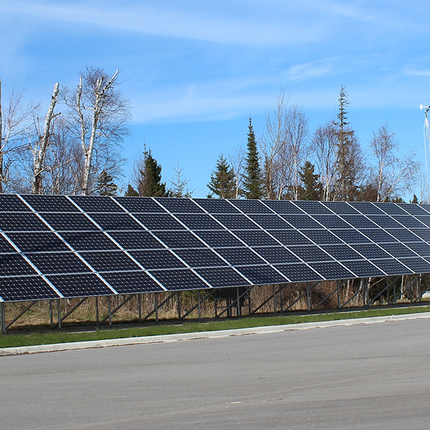By Katie Rock, former staff member. Note: This blog is a follow-up to a piece we had on Bloomfield last December.
When it comes to rural development, the town of Bloomfield in southeast Iowa is holding its own.
After a study concluded Bloomfield (population 2,643) could become energy independent in its use of electricity by 2030, the city council is pursuing a combination of efficiency upgrades and investments in clean, renewable energy.
Bloomfield’s expanding list of projects has inspired Iowa Wind and Solar, a company founded and headquartered in Fairfield, Iowa, to recently open an office in the southeast Iowa town.
The study was conducted by the Iowa Association of Municipal Utilities and funded through the Iowa Economic Development Authority (view it here). In the study, six strategies are summarized to achieve energy independence. The first strategy focuses on implementing a comprehensive set of energy efficiency programs that would reduce electricity use by 23 percent over 10 years. The next set of strategies would use diesel generators and other equipment to help reduce peak loads. The remaining strategies outline how Bloomfield could achieve 50 percent, 75 percent, or 100 percent of its electricity through solar and wind.
For 100 percent independence, Bloomfield would need to add 11,400 kilowatts (kW) of solar power, two large wind turbines, and 130 kW of microturbines over 10 years.
Bloomfield should be one of the first municipalities to take advantage of the credit. Iowa’s solar tax credits have a great record of success. Tax credits in Iowa were expanded in the last legislative session to include projects with 10 megawatts (MW) of solar power owned by municipal utilities. From 2012 to 2016, Iowa invested approximately $16 million in solar tax credits to leverage $123 million in private investment in solar energy systems.
In Bloomfield, the installation of wind and solar power generation to achieve 100 percent independence would bring an estimated $35 million of investment and new jobs in the construction and maintenance of projects. Successful projects can act as a model for Iowa’s 136 other municipal electric utilities, and together these efforts will lead to more rural jobs.
Bloomfield offers an alternative to rural development compared to efforts made to lure big tech companies to invest in Iowa, like the recent state incentives provided to Apple for a data center in Waukee (population 19,284). The two efforts differ not only in skill, but also in strategy. Bloomfield’s strategy combines community engagement with investments that lead to broad savings and environmental benefits for the public, including property owners, residents, and schools. By 2030, Bloomfield should offer all the benefits of small town living and being off-the-grid.





